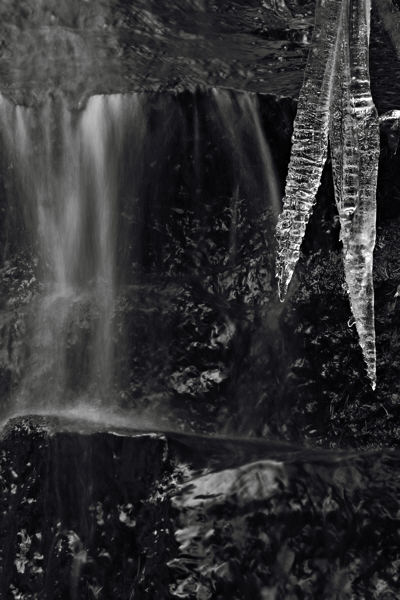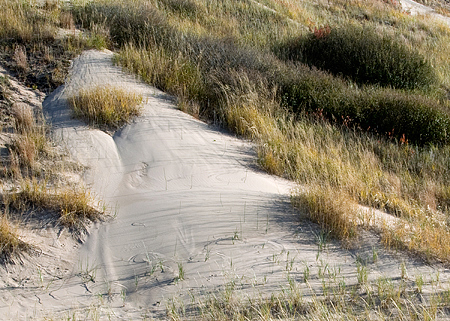If death is one of the great mysteries, it seems somehow unfitting that I most often simply stumble upon it. Last week, along a river bank where I was exploring for cottonwoods, I came across the remains of a pronghorn (antelope) on the shelf of ice at the edge of the water. They are quite commonly seen in the fields around there, but this was the first I’ve seen dead. My eye did not recognize at first what it was seeing among the stones and the crow tracks.
Archives for photography
Essence of cottonwood — not
One of the most annoying things to read in a statement or press release is the claim that so-and-so has captured the essence of such-and-such. Even someone “attempting to capture the essence” of their subject makes me look around for the nearest edge. I am saved only by the certain knowledge that some people are so intimidated by words that they’ll settle for meaningless clichés just to be done with it.
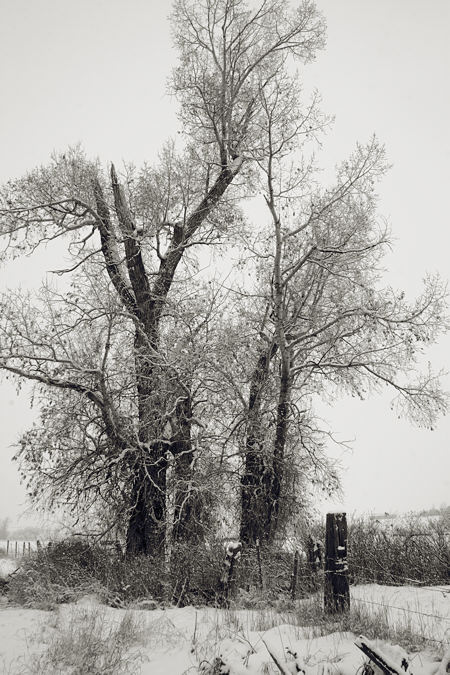
When yin turns to yang
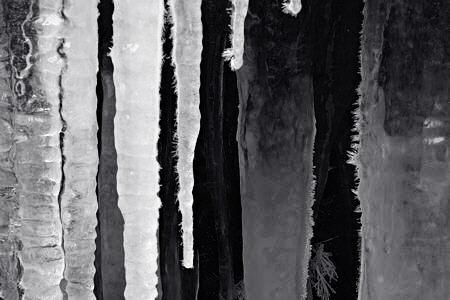
Winter is now here, having held off till mid-November. Last weekend I headed in to Pine Creek Falls, hoping to find an entrancing combination of ice, snow, water, and rock, as I had last year at this time. That’s when I had the first inklings of waterfalls as a potential subject. As I gear up for another round with Jay, attempting to come to grips with what that subject means to me, it seemed a good idea to return to the source.
Horses of a different artist
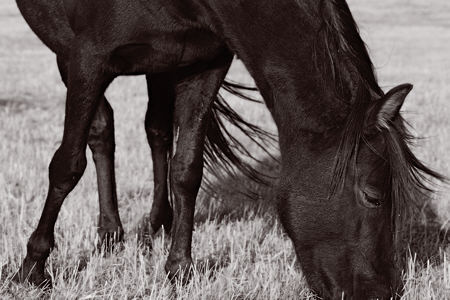
It should be no surprise that in Montana, even in Bozeman, there’s no shortage of artists painting, drawing, sculpting and photographing horses. Which is a delight for me, engaged as I am in such a project myself (posts here and here). That gives me a keen interest in how others have responded to the subject, and enhances my appreciation of their work.
So it’s shocking to me that, before yesterday, I hadn’t thought for a long time about Deborah Butterfield. Two years ago I first saw her horse sculptures at the Yellowstone Art Museum; they had the force of revelation. I remember walking into the room and having to sit down (on a fortunately placed bench) to gaze at the horse there, one of her newer ones in patina’d bronze cast from driftwood. Without any knowledge of Butterfield, her technique, or the subject, my overwhelming impression was that this was a person who understood horses. What they are inside, and how they are put together, in both a physical and a metaphorical way.
more… »
how to move on?
“If you come to a fork in the road, take it”, David recently quoting Yogi Berra.
How can I prepare for such a change in direction while avoiding mishaps? Friends of mine, relocating to new jobs, suffered minor strokes and a bout of pancreatitis. This is the advice offered in the current Yoga journal:
“Once you find your center, you can move in new directions”.
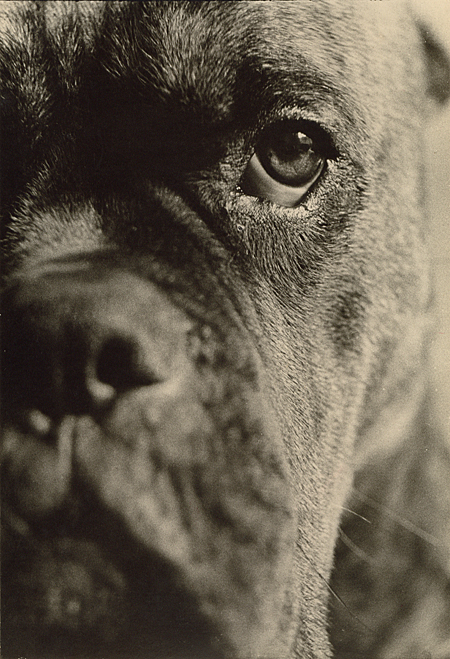
It’s about time
Sometimes, when you get hammered with something from all sides, it begins to sink in. Last week Susan Galassi (Curator at the Frick and Picasso scholar) discussed, among other things, Picasso’s concern with time, which was a new one for me. A few days later, while chatting with artist Glenn Bodish about his work, he told me that a major theme throughout his career has been time and the way it structures our experience through change and the opening and closing of possibilities (at least that’s how I read it; there was a lot of interesting stuff in there about quantum mechanics and chaos and four dimensions and Eastern philosophy). Then, the next time I had a camera in my hands, I was at a small waterfall seeing nothing of particular note — until I had the thought that a photograph there could be about time.
